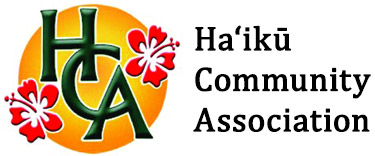Nitrates Details
Understanding Nitrate (NO3-) Levels in Haʻikū Streams: A Guide to Stream Health
The Haʻikū Community Association is committed to transparency and providing information on the health of our local streams. This webpage focuses on nitrate levels, a crucial indicator of water quality and public health. By understanding nitrates and their relationship to other water parameters, we can make informed decisions about recreational activities in our streams.
Nitrate as an Indicator of Water Quality
Nitrate (NO3-) levels in freshwater streams are important indicators of water quality. Nitrate primarily enters streams through runoff from agricultural fertilizers, animal waste, and sewage. Elevated nitrate levels can lead to eutrophication, which promotes excessive algae growth and oxygen depletion, negatively impacting aquatic ecosystems.
Nitrates and Stream Health:
Nitrates are a form of nitrogen, essential for plant life, but excessive levels in streams can signal pollution. Sources include fertilizers, animal waste, and septic systems. High nitrate concentrations can disrupt the aquatic ecosystem and, in extreme cases, pose health risks for humans, particularly infants.
Recreational Public Health Safety
Monitoring nitrate levels is crucial for assessing the safety of freshwater streams for recreational activities such as swimming and fishing. High nitrate levels can pose health risks to humans, particularly infants, if ingested through contaminated water. Nitrate can also contribute to the formation of harmful nitrites under certain conditions, further impacting water quality.
Contributing Factors to Nitrate Levels
Several factors influence nitrate concentrations in stream waters:
- Nitrogen Sources: Agricultural activities, including fertilizer use and animal waste runoff, are significant sources of nitrates in streams.
- Temperature and pH: Warmer temperatures and alkaline pH conditions can enhance nitrate availability and persistence in water.
- Dissolved Oxygen (DO): Low dissolved oxygen levels can affect the microbial processes that convert nitrate into nitrogen gas, leading to nitrate accumulation in water.
- Erosion and Sedimentation: Soil erosion and sediment runoff can transport nitrogen-containing compounds, contributing to increased nitrate levels in streams.
- Other Water Quality Parameters: Nitrate levels can interact with parameters such as conductivity, salinity, and the presence of indicator bacteria like E. coli and Enterococcus, which collectively reflect overall water quality.
Using Nitrate Data:
The Haʻikū Community Association website will display nitrate levels measured at various stream locations. However, a single data point doesn’t tell the whole story. Here’s how to interpret the data:
- Look for Trends: Monitor nitrate levels over time. A consistent rise may indicate ongoing pollution.
- Consider Other Parameters: Factors like Dissolved Oxygen (DO), pH, and conductivity influence nitrate levels. Low DO can slow down the conversion of nitrates to harmless nitrogen gas, leading to higher nitrate concentrations. Conversely, healthy DO levels promote this natural purification process.
- Compare to Guidelines: The US Environmental Protection Agency (EPA) has set a maximum contaminant level (MCL) for nitrate in drinking water at 10 mg/L [1]. While there are no established recreational safety limits, persistently high nitrate levels alongside other indicators might suggest potential health risks.
Additional Stream Health Indicators:
Nitrate levels are just one aspect of stream health. The website will also display data on:
- Nitrites: An intermediate stage in the breakdown of organic matter, elevated nitrites can indicate recent pollution events and often accompany high nitrates.
- Phosphates: Often found with fertilizers, excess phosphates can contribute to excessive algae growth, further impacting stream health.
- E. Coli and Enterococcus: Bacteria indicating fecal contamination, a serious health risk.
- Erosion and Sedimentation: Can increase turbidity, impacting aquatic life and the breakdown of nitrates.
Monitoring and Data Accessibility
The Haʻikū Community Association conducts regular monitoring of nitrate levels in local streams and provides accessible data through our community website [https://www.haikumaui.org/water-quality-data/]. This data allows community members and the public to make informed decisions about the safety of using specific streams for recreational purposes. Here you can find:
- Current Nitrate Levels: Provides immediate information on water quality conditions.
- Comparative Analysis: Allows users to compare nitrate levels against established safety standards for recreational use.
- Comprehensive Water Quality Parameters: Includes data on pH, dissolved oxygen, conductivity, and bacterial counts to provide a holistic view of stream health.
Safety Tips:
- Avoid streams with persistently high nitrates, bacteria, or low DO.
- Shower thoroughly after swimming, especially if you experience any irritation.
- Report concerns about pollution to the appropriate authorities.
Please Note: This information is intended for general knowledge. It is always advisable to consult with local health officials for specific advisories before entering the water.
By monitoring stream health and sharing data, we can work together to protect our valuable water resources.
REFERENCES:
1United States Environmental Protection Agency. (n.d.). Drinking Water Contaminants & MCLs [EPA Website]. [epa.gov]
